#House of Saxe-Coburg and Gotha
Text
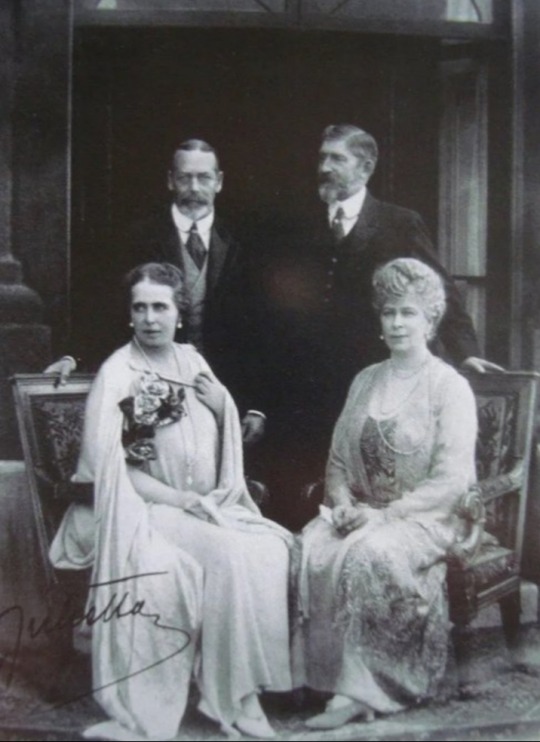

Queen Marie of Romania, King George V of the United Kingdom, King Ferdinand I of Romania, and Queen Mary of the United Kingdom, 1924
—
Ferdinand (Ferdinand Viktor Albert Meinrad; 24 August 1865 – 20 July 1927), nicknamed Întregitorul ("the Unifier"), was King of Romania from 1914 until his death in 1927.
Marie (born Princess Marie Alexandra Victoria of Edinburgh; 29 October 1875 – 18 July 1938) was the last Queen of Romania as the wife of King Ferdinand I.
George V (George Frederick Ernest Albert; 3 June 1865 – 20 January 1936) was King of the United Kingdom and the British Dominions, and Emperor of India, from 6 May 1910 until his death in 1936.
Mary of Teck (Victoria Mary Augusta Louise Olga Pauline Claudine Agnes; 26 May 1867 – 24 March 1953) was Queen of the United Kingdom and the British Dominions, and Empress of India, from 6 May 1910 until 20 January 1936, as the wife of King-Emperor George V.
#Queen Marie of Romania#King Ferdinand I of Romania#King George V of the United Kingdom#Queen Mary of the United Kingdom#British Royal Family#Romanian Royal Family#House of Hohenzollern-Sigmaringen#House of Saxe-Coburg and Gotha#House of Windsor
26 notes
·
View notes
Text
British Royal Family Tree

#queen elizabeth ii#queen victoria#British royal family tree#British family tree#House of Windsor#House of saxe-coburg and gotha
30 notes
·
View notes
Text
Controversy:
The Queen is Dead!
Long Live the King!
#You're welcome#no I'm not a monarchist#i just play one on TV#queen elizabeth ii#king Charles iii#prince Charles#British Monarchy#United Kingdom#Britain#her majesty#his majesty#royalty#god save the queen#god save the king#dungeons & dragons#Lord of the rings#game of thrones#House of Windsor#House of Saxe-Coburg and Gotha#Saxe-Coburg#historical event#monarchy
5 notes
·
View notes
Text

King Leopold I of the Belgians. By George Hayter.
46 notes
·
View notes
Text

The Princess de Réthy. Photographed by Robert Marchand, 1950s.
23 notes
·
View notes
Text

Alexander III and his niece Victoria of Wales
I like these two historical figures although I admit that for what we know about their personalitie, neither one would be precisely soft and cuddly.
#Alexander III#russian history#imperial russia#romanov family#Princess Victoria of Wales#house of saxe coburg and gotha#house of windsor
57 notes
·
View notes
Text

Their Majesties, King Edward VII of the United Kingdom and Queen Amelie of Portugal
#king edward vii#queen amelie of portugal#british royal family#portuguese royal family#british history#portuguese history#house of saxe coburg and gotha#house of braganza
28 notes
·
View notes
Text
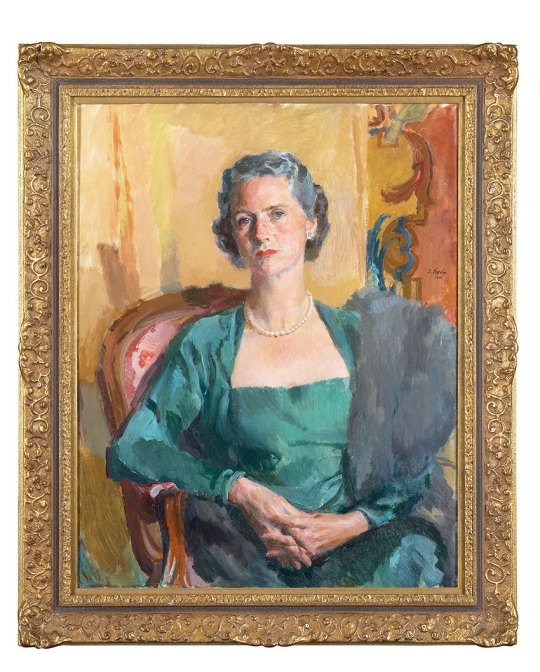
Princess Sibylla of Sweden by David Tägtström (oil on canvas, 1951)
The Dalarna artist David Tägtström wanted to capture the personalities of his models, rather than their social status. One trick he used was to let his models sit for so long that they stopped posing, and started to relax and just be themselves. "And then it is just a matter of painting," he said.
Princess Sibylla, the mother of our current king, gives an elegant and relaxed impression as she sits in a green silk dress with a fur stole over one shoulder. As a princess, she quickly became much loved by the people of Sweden, together with her daughters, the popular Haga Princesses.
The portrait can be seen in the East Guard's Hall of the Bernadotte Apartments at the Royal Palace of Stockholm.
Photo: royalpalaces.se
#swedish royal family#princess sibylla#duchess of västerbotten#sibylle von sachsen-coburg und gotha#sibylla of saxe-coburg and gotha#prinzessin sibylle von sachsen-coburg und gotha#princess sibylla of saxe-coburg and gotha#house of saxe coburg and gotha#art history#official portrait#swedish royalty#swedish history#royal history
6 notes
·
View notes
Photo

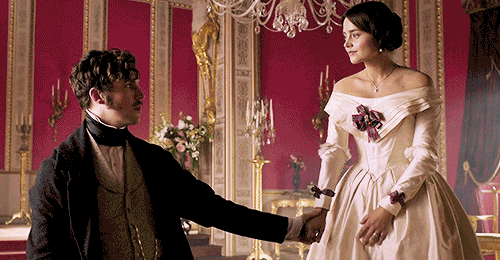
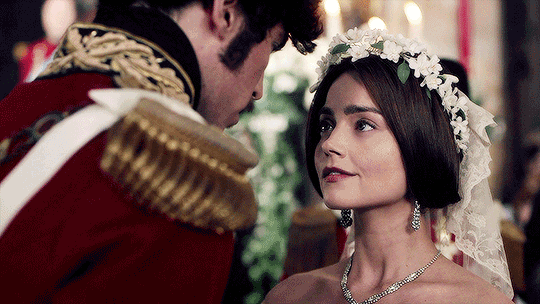

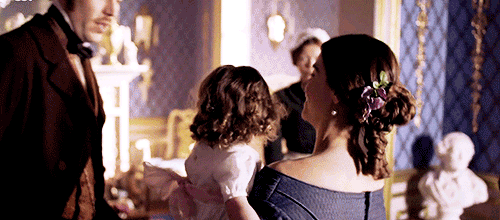
HISTORICAL LOVERS - I
Victoria & Albert
Few lovers have entered the popular imagination as permanently as Queen Victoria of the United Kingdom and Prince Albert of Saxe-Coburg and Gotha. Married for twenty-one years, until the prince's untimely death, the pair became the epitome of marital bliss, and no one ever questioned the harmonious relationship between the queen and her husband.
Over the years, several small demonstrations of love proved the passionate nature of their marriage. Among it, the engagement ring that Albert himself designed for the bride, in the shape of a serpent, to represent the truth of his commitment, decorated with rubies, diamonds and a single emerald (Victoria's birthstone); the portrait Victoria had secretly commissioned as a twenty-fourth birthday present for Albert, which depicted her casually dressed, reclining against a red velvet pillow, her hair loose; the crystal heart pendant that the queen wore day and night, containing a lock of the prince's hair.
The two-decade union produced nine children, five girls and four boys: Victoria (1840-1901); Albert Edward (1841-1910); Alice (1843-1878); Alfred (1844-1900); Helena (1846-1923); Louise (1848-1939); Arthur (1850-1942); Leopold (1853-1884); Beatrice (1857-1944). Most of the children would eventually marry into other royal european families, which resulted in Victoria being called the "Grandmother of Europe." Until the beginning of the 20th century, most of these ruling houses could boast of sharing the queen's blood through the paternal side, maternal side, or even through both.
As parents, the prince and queen could differ in many ways, although in the end they both loved their children. Albert tended to be more involved with the princes and princesses during their childhood, especially in their education, and it is common consensus among historians that their eldest, Vicky, was his favorite, since she shared his enthusiasm for culture, languages and natural studies. The prince taught his children many of his favorite topics, and encouraged them to value the arts and sciences. His “enlightened influence” inspired many of them to engage in intellectual hobbies such as politics, philosophy and history.
The queen, in turn, connected more easily with her children at an older age. Victoria hated being pregnant, from the usual symptoms to the painful labor, and she thought newborns were ugly. But she was willing to follow her husband's opinion about the health of the children, and she watched the progress of each one of them in their studies. She drew them quite frequently, sketeches and paintings that still exist today in the private colection of the British royal family. Her daughter Louise would become her loyal secretary after Albert´s tragic death, and the youngest, Beatrice, her devoted companion even after married.
But perhaps the most iconic reflection of the connection between the British queen and the German prince is Victoria's reaction to his loss. No one in the royal family grieved his death as much as she did. The queen, still in her early forties, never remarried; she retired even more and more frequently to her countryside properties, especially Osborne House, the estate her husband prefered to visit during the summer; and she abandoned any colorful clothes in her wardrobe, confining herself to the black reserved for mourning, until she passed.
“My life as a happy one is ended. The world is gone for me. If I must live on (and I will do nothing to make me worse than I am), it is henceforth for our poor fatherless children – for my unhappy country, which has lost all in losing him – and in only doing what I know and feel he would wish.”
– Passage from Queen Victoria's diary, after the death of Prince Albert, 1861.
#queen victoria#prince albert#albert&victoria#british royal family#britishqueens#english history#british history#queens#historicalwomen#history#quotes#saxe-coburg-gotha#house of hanover
19 notes
·
View notes
Photo
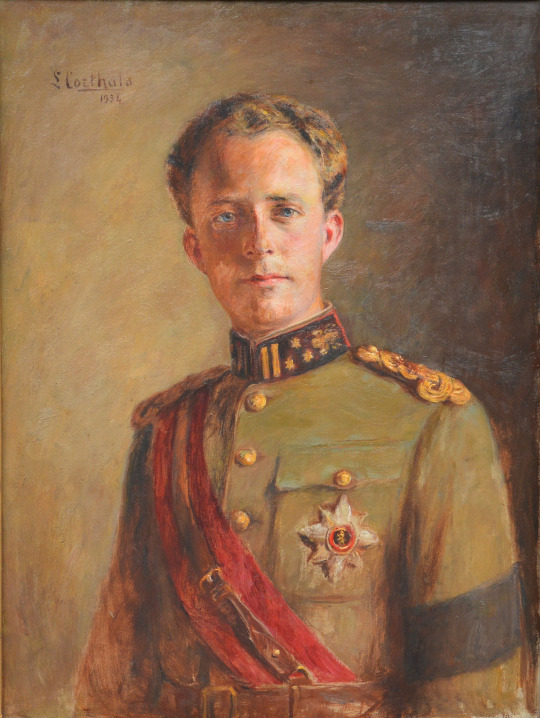
King Leopold III of Belgium (1901-1983). By Léon Corthals.
9 notes
·
View notes
Text

Members of the Saxe-Coburg and Gotha Family, circa 1875.
From left to right: Duchess Amalie in Bavaria (née Princess of Saxe-Coburg and Gotha), Duke Maximilian Emanuel in Bavaria, Prince Ludwig August, Prince Ferdinand (future Tsar of Bulgaria), Archduchess Clotilde of Austria (née Princess of Saxe-Coburg and Gotha), Archduke Joseph Karl of Austria, Prince Philip and Princess Louise (née Princess of Belgium)
Via Wikipedia Commons
#mapperl holding amalie's hand <3#house of saxe coburg and gotha#house of wittelsbach#house of habsburg
7 notes
·
View notes
Text
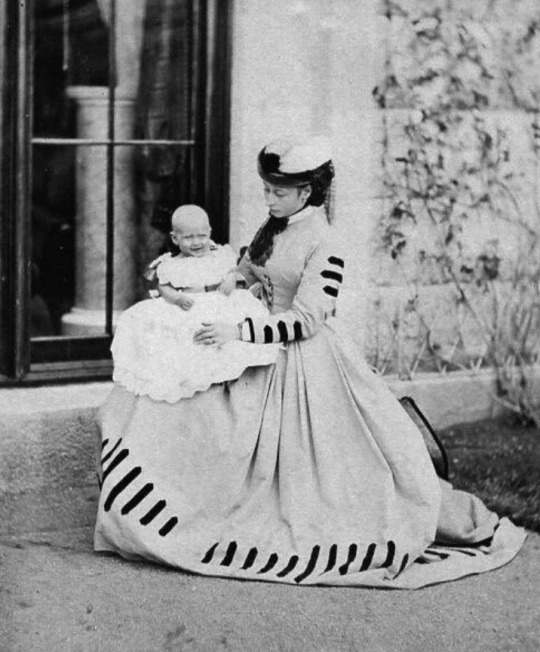
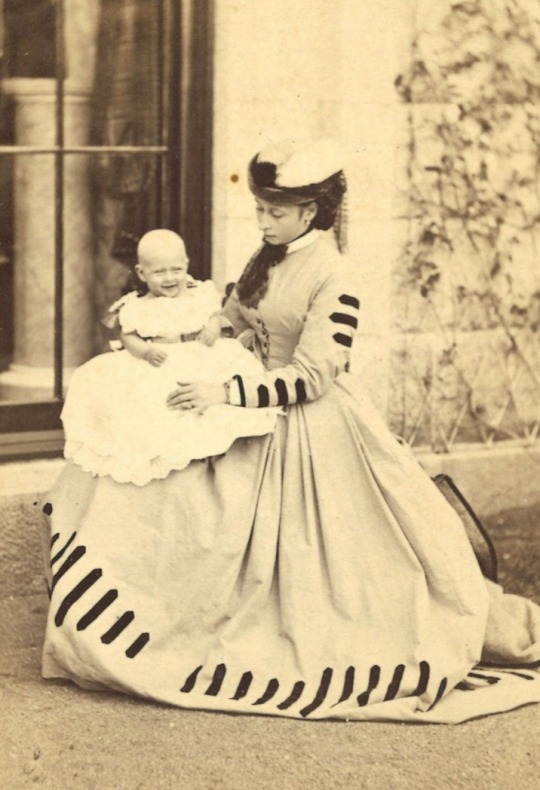
Princess Alice of Hesse and her daughter Victoria, 1863
—
Princess Alice VA CI (Alice Maud Mary; 25 April 1843 – 14 December 1878) was Grand Duchess of Hesse and by Rhine from 13 June 1877 until her death in 1878 as the wife of Grand Duke Louis IV.
She was the third child and second daughter of Queen Victoria of the United Kingdom and Prince Albert of Saxe-Coburg and Gotha.
Alice was the first of Queen Victoria's nine children to die, and one of three to predecease their mother, who died in 1901.
Her life had been enwrapped in tragedy since her father's death in 1861.
Victoria Alberta Elisabeth Mathilde Marie Mountbatten, Marchioness of Milford Haven VA (born Princess Victoria of Hesse and by Rhine; 5 April 1863 – 24 September 1950) was the eldest daughter of Louis IV, Grand Duke of Hesse and by Rhine, and Princess Alice of the United Kingdom, second daughter of Queen Victoria and Prince Albert of Saxe-Coburg and Gotha.
#Princess Alice#Grand Duchess of Hesse and by Rhine#Princess Victoria of Hesse and by Rhine#British Royal Family#House of Saxe-Coburg and Gotha#House of Hanover#House of Hesse
21 notes
·
View notes
Text
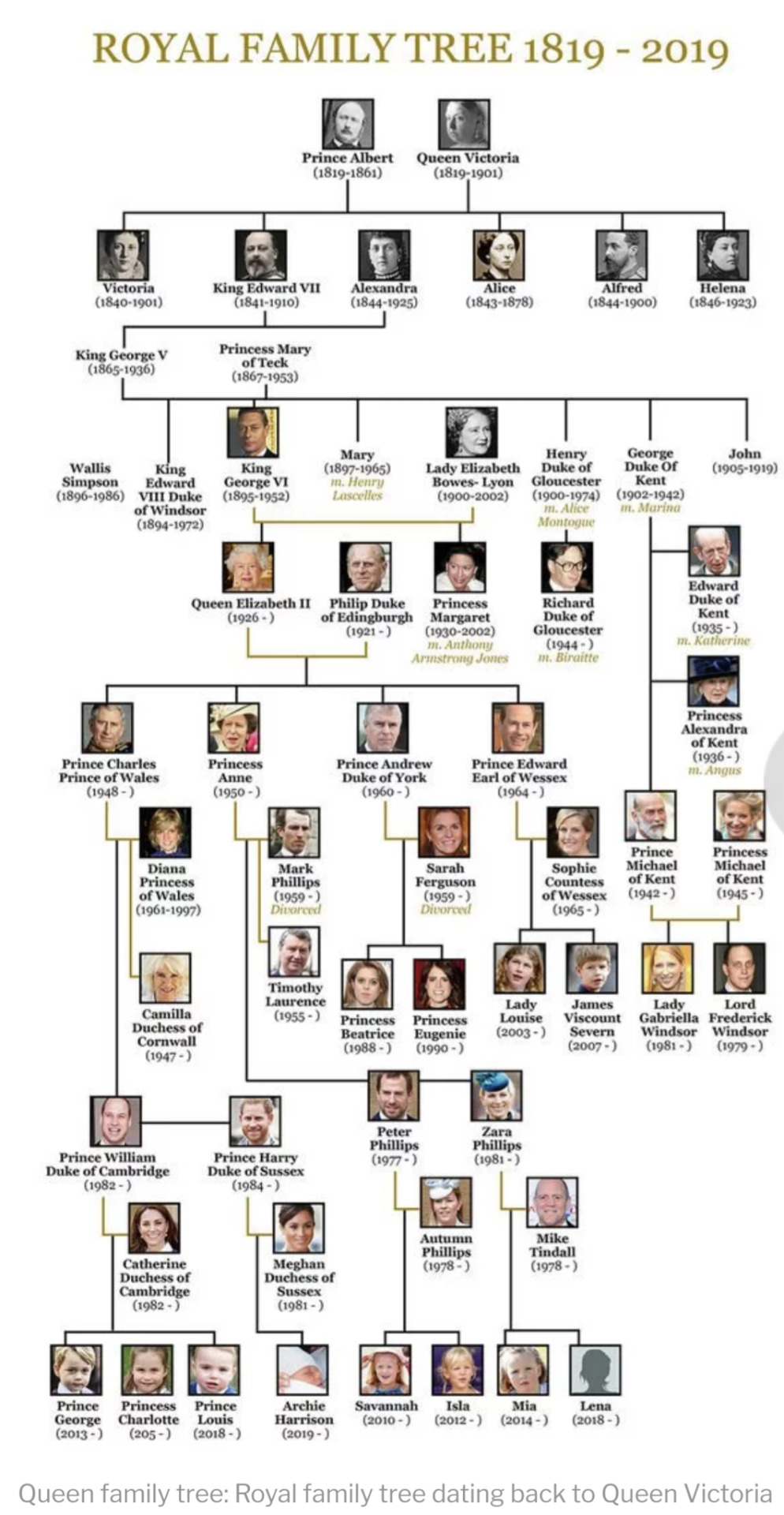
#british royal family tree#family tree#royal family tree#house of Windsor#house of hanover#House of saxe-coburg and gotha
13 notes
·
View notes
Text

23.11.2022
A (small) dive into fairly recent history
#26lettersandmanyjourneys#books#reading update#pic#antonia fraser#a royal history of england#the houses of hanover and saxe-coburg-gotha
1 note
·
View note
Text

King Albert II of Belgium.
2 notes
·
View notes
Text


Astrid of Sweden, Queen of the Belgians. Photographed by Robert Marchand, 1927.
15 notes
·
View notes